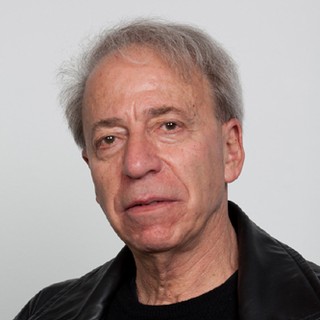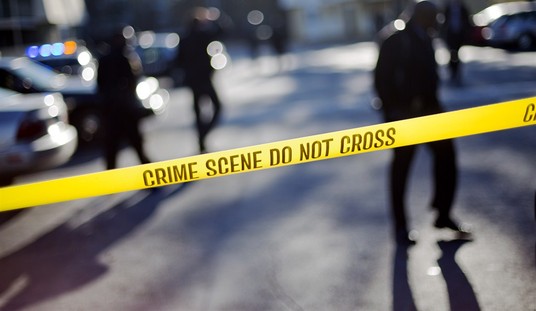Leftist poster boy and university folk hero Al Gore, having misled filmgoers on climate change, also practices his wiles on the reading public. In his most recent book, The Assault on Reason, Gore claims that “terrorism relies on the stimulation of fear for political ends. Indeed its specific goal is to distort the political reality of a nation by creating fear in the general population that is hugely disproportionate to the actual danger that the terrorists are capable of posing.” Given his appeasing rhetoric in the face of Islamic terror, I sometimes think the former vice president’s name should be changed to al-Gore.
This is essentially the same argument developed in Ian Lustick’s Trapped in the War on Terror. Lustick, a political science professor at the University of Pennsylvania, believes that the threat has been grossly exaggerated, that the fear factor has been exploited by business and government for profitable ends, that terrorism is mainly a European problem, and that 9/11 was a one-off attack, forgetting that it was owing to sheer dumb luck that 40,000-50,000 people did not perish in the inferno — and, indeed, only by grace of a miscue that the Madrid attack did not claim thousands of victims. Conveniently, he pays no heed to the many subsequent terrorist attempts, not only in the UK and Germany, but in Canada and the U.S. that have been foiled by alert surveillance. Canadian author Howard Rotberg has aptly countered Gore’s and Lustick’s trendy prattle in Second Generation Radical, where he writes that “the situation is not that the fear of terrorism is disproportionate to its danger, but that the danger is disproportionate to the fear. … ‘Fear’ is not the problem; the problem is delusional responses to that fear.”
A more recent example of the spurious argument involves former CIA case officer Marc Sageman, who, according to his bio, holds various positions at the University of Pennsylvania and the University of Maryland. In a review of his Leaderless Jihad: Terror Networks in the Twenty-First Century, Daniel Pipes has pointed out how easily numbers and statistics can be manipulated to support a partisan thesis. Sageman contends that America’s presumably softer, assimilationist approach to its Islamic community gives it an advantage over Europe’s alienating tendencies, thus reducing the threat of internal jihad. “The rate of arrests on terror charges per capita among Muslims is six times higher in Europe than in the United States,” Sageman claims, explaining that the difference lies “in the extent to which these respective Muslim communities are radicalized.”
However, the actual figures suggest the very reverse of his conclusions. To begin with, his numbers are completely skewed. He asserts that since 9/11 “there have been over 2,300 arrests connected to Islamist terrorism in Europe in contrast to about 60 in the United States.” But Europol’s official figures posit 1,400 European arrests and the U.S. Department of Justice shows 527, actually a low-ball figure. The misconception grows even more interesting when one considers relative percentages. Contrary to President Obama’s inflated census of Muslim Americans pitched in his Cairo speech, the Muslim population in the U.S. is only around 14% of Europe’s, which means that, proportionally speaking, the American arrest rate is between two and three times higher than that of Europe. Given that the U.S. has indeed made more strenuous efforts to assimilate its Muslim population, Pipes’ logical conclusion is the opposite of Sageman’s: integrating the Islamic community exacerbates rather than diminishes the likelihood of terror.
Another instance of this tendency to reduce the sense of the terrorist menace in the collective psyche is furnished by Douglas E. Streusand, a professor of Islamic studies at the American Military University, and Purdue University graduate Harry D. Tunnell IV. In “Choosing Words Carefully: Language to Help Fight Islamic Terrorism” (since posted on the Islamist CAIR website under the heading “Cultural Ignorance Leads to the Misuse of Islamic Terms”), the duo takes a slightly different tack. It is terminology that is at issue here. The essential argument is that the term “jihad” has been misunderstood and wrongly applied by the West, that our Islamic enemies are only a misguided offshoot of a noble spiritual struggle and should properly be called “mufsidim” (evil or corrupt persons, “spoilers”), separating them from mainstream Islam so that we do not offend our Muslim friends and allies. In this way our “experts” seek to soft-pedal the magnitude of the conflict in which we are engaged.
The authors of this piece of dysmorphic twaddle are clearly developing the thesis of Middle East studies pedagogue John Esposito, head of the Saudi-funded Prince Alwaleed bin Talal Center for Muslim-Christian Understanding at Georgetown University. Esposito is one of Islam’s chief apologists and a rainmaker for the terrorist cause, who asserts in The Islamic Threat: Myth or Reality? that jihad is “a spiritual experience only, not a menace,” discounts the “stereotypes of activists as fanatics” whom he claims “share a common call for the transformation of society” through an apparently justifiable “response to the present” — a most interesting formulation in the incendiary circumstances — and wishes to draw our attention away from the global conflict that threatens to engulf us toward those “many Islamic organizations [that] today espouse liberalization and democratization.” Esposito serves his paymasters well.
Another theory advanced by a particularly callous sect of academics involves the so-called “statistical argument.” Events such as 9/11 are dismissed as relatively infrequent and the casualty count, when set against the fatalities contingent upon standard, domestic, or “normal” misfortunes, is regarded as comparatively insignificant. Such a hypothesis, of course, is pure nonsense and is easily deflated. The statistics pertaining not only to traffic accidents but to alcohol-related deaths or even being struck by lightning, which are supposed to put terrorism in context, only reinforce a kind of dream world, a species of farcical irreality. This is the sort of surreal dimension inhabited, for example, by terror pundit and Columbia University professor Phillip Bobbitt, who, in his Terror and Consent, informs us that the number of terror deaths and bathtub drownings is “about the same.” Remember to strap on a scuba diving tank next time you take a bath.
As we can see, there is plainly no shortage of academics and faculty lounge debaters peddling chimeras, striving to minimize the very real danger we are in, and working to narcotize us into a state of political and cultural somnolence. Academic John Mueller, author of the rather fatuous Overblown: How Politicians and the Terrorism Industry Inflate National Security Threats and Why We Believe Them, has recently jumped into the game, appearing on a panel at Ohio State University discussing Jimmy Carter’s Palestine: Peace Not Apartheid, in which, along with fellow professor John Quigley, he sought to further diminish the reality of the terrorist threat. Osama bin Laden, it turns out, is really a 21st-century anti-colonialist and the attack on the WTC was carried out by the American government. Interestingly, the panel was co-sponsored by the Council on American-Islamic Relations.
Our propitiating academics are the fortunate and voluntary exiles of our time, having left the rigors of real life behind and opted for life in an insular seminary of detached speculation, guaranteed by the tenure system. “It’s a bad situation,” writes Mark Bauerlein in MindingTheCampus.com. “The very system that academics invoke to fend off critics has become part of the problem. Ideological bias has seeped into the standards of professionalism. … Tenured professors enjoy their lifetime paychecks and proceed by professional habits … los[ing] touch with common sense and real-world implications.” I am reminded of those wonderful lines from the 18th-century poet Peter Pindar’s Laughing at the King:
For men (it is reported) dash and vapour
Less in the field of battle, than on paper.
Writing in FrontPage Magazine, Ward Connerly, chairman of the American Civil Rights Institute, maintains that the professoriate must reform itself in order to combat the “continued public perception that the academy is intellectually monolithic” as well as “goofy and out of touch.” But this is far more than merely a “perception”; it is a blunt fact, especially, though not exclusively, in the humanities and the social sciences. And, naturally, the law faculties. Barack Obama, we recall, was once an academic, however obscure and of uncertain achievement. He too suffers the pathos of untested erudition, rebranding the “war on terror” as “overseas contingency operation.” Contingency? Overseas?
This out-of-touchness with the real world explains why law professors like Robert Chesney of Wake Forest University and Peter Margulies of Roger Williams University opposed the conviction of José Padilla (a.k.a. Abdullah al-Mujahir) for conspiring to commit terror, on the grounds that, although he was affiliated with a radical jihadist organization and supported terrorist operations, he had not yet committed an act of terrorism. Andrew Klavan wisely reminds us that “police work — like soldier work — doesn’t take place in the mind of a college professor.” Neither does world work.
As a character in the old spy-spoof sitcom Get Smart would exclaim, after witnessing the unbelievable asininities of the protagonist, “Ama-a-a-zing!” And it is indeed amazing. For the Maxwell Smarts of the academic world, it appears we must wait for people to die before we bestir ourselves to respond — and then, doubtlessly, to fold the casualty count into a statistical compilation that scumbles their significance. If this kind of thinking goes on for too long, the groves of academe will eventually turn into the graves of academe. For the world will not always be so obliging as to stop at the gates of the university.
Renowned Middle East authority Elie Kedourie had a credulous public in mind when he wrote in an article dating back to 1961 that, in the absence of exact and grounded knowledge, “the academic advising or exhorting action will most likely appear a learned fool, babbling of he knows not what.” What academics don’t “babble” about is equally troubling. Scarcely a word can be found in their voluminous tracts concerning the bellicose initiatives of the expanding terror cartel involving Iran, Venezuela, Russia, and North Korea, with America in the cross hairs. Too obvious, no doubt, for those who pride themselves on their subtlety to notice.
For all their supposed little grey cells, our academics are no Hercule Poirots, able to resolve the mysteries they confront. On the contrary, they are, on the whole, quite modestly equipped. It is perhaps not too farfetched an analogy to compare the modern liberal university to a nutrient vat of amphibious brains disconnected from reality and wired to a giant computer, taking the illusions they are fed for a transcript of the actual world. For the effectiveness of campus theories is approximately nil or, if anything, utterly counterproductive.
Let us listen to genuine thinkers, not university virtuosos. “We have entered another world,” writes André Glucksmann in City Journal. “The threat of Ground Zero, small or great, advances behind a mask. The human bomb claims the power to strike anywhere, by any means, at any time, spreading his nocturnal threat over the globe, invisible and unpredictable. … The terrorist without borders makes us think about him always, everywhere. … Each of us waits for the next explosion.” The general run of our academics and intellectual elites, however, lapped in their dolce far niente, wait instead for the next book deal, the next invitation to hold forth at learned conferences, the next promotion, the next CNN appearance, the next citation or award — and who knows, maybe even a Nobel Peace Prize. These are, for them, the real issues, as they continue, in Glucksmann’s words, “regilding the clocks of Cloud-Cuckoo-Land” and dispensing the bromides that “prove their innocence and comfort their fragile souls.”
“What, me worry?” Mad magazine’s cover mascot Alfred E. Neuman famously asked. The answer to that question today, at least for those who still have their heads on their shoulders and are not given to glib scholarly lucubrations, is: “Yes, worry, be very worried.”










Join the conversation as a VIP Member